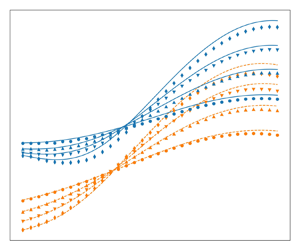No CrossRef data available.
Published online by Cambridge University Press: 02 December 2024

Compound flows consist of two or more parallel compressible streams in a duct and their theoretical treatment has gained attention for the analysis and modelling of ejectors. Recent works have shown that these flows can experience choking upstream of the geometric throat. While it is well known that friction can push the sonic section downstream of the throat, no mechanism has been identified yet to explain its displacement in the opposite direction. This study extends the existing compound flow theory and proposes a one-dimensional (1-D) model, including friction between the streams and the duct walls. The model captures the upstream and downstream displacements of the sonic section. Through an analytical investigation of the singularity at the sonic section, it is demonstrated that friction between the streams is the primary driver of upstream displacement. The 1-D formulation is validated against axisymmetric Reynolds averaged Navier–Stokes simulations of a compound nozzle for various inlet pressures and geometries. The effect of friction is investigated using an inviscid simulation for the isentropic case and viscous simulations with both slip and no-slip conditions at the wall. The proposed extension accurately captures the displacement of the sonic section, offering a new tool for in-depth analysis and modelling of internal compound flows.